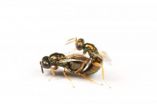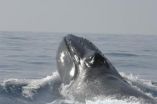(Press-News.org) We make choices about pretty much everything, all the time – "Should I go for a walk or grab a coffee?"; "Shall I look at who just came in or continue to watch TV?" – and to do so we need something common as a basis to make the choice.
Dr John Fennell and Dr Roland Baddeley of Bristol's School of Experimental Psychology followed a hunch that the common quantity, often referred to simply as reward, was a representation of what could be gained, together with how risky and uncertain it is. They proposed that these dimensions would be a unique feature of all objects and be part of what those things mean to us.
Over 50 years ago, psychologist Charles Osgood developed an influential method, known as the 'semantic differential', that attempts to measure the connotative, emotional meaning of a word or concept. Osgood found that about 50 per cent of the variation in a large number of ratings that people made about words and concepts could be captured using just three summary dimensions: 'evaluation' (how nice or good the object is), 'potency' (how strong or powerful an object is) and 'activity' (whether the object is active, unpredictable or chaotic). So, half of a concept's meaning is simply a measure of how nice, strong, and active it is. The main problem is that, until now, no one knew why.
Dr Baddeley explained: "Over time, we keep a running tally of all the good and bad things associated with a particular object. Later, when faced with a decision, we can simply choose the option that in the past has been associated with more good things than bad. This dimension of choice sounds very much like the 'evaluation' dimension of the semantic differential."
To test this, the researchers needed to estimate the number of good or bad things happening. At first sight, estimating this across a wide range of contexts and concepts seems impossible; someone would need to be observed throughout his or her lifetime and, for each of a large range of contexts and concepts, the number of times good and bad things happened recorded. Fortunately, a more practical solution is provided by the recent phenomenon of internet blogs, which describe aspects of people's lives and are also searchable. Sure enough, after analysing millions of blog entries, the researchers found that the evaluation dimension was a very good predictor of whether a particular word was found in blogs describing good situations or bad.
Interestingly, they also found that how frequently a word was used was also a good predictor of how much we like it. This is a well-known effect – the 'mere exposure effect' – and a mainstay of the multi-billion dollar advertising industry. When comparing two options we just choose the option we like the most – and we like it because in the past it has been associated with more good things.
Analysing the data showed that 'potency' was a very good predictor of the probability of bad situations being associated with a given object: it measured one kind of risk.
Dr Fennell said: "This kind of way of quantifying risk is called 'value at risk' in financial circles, and the perils of ignoring it have been plain to see. Russian Roulette may be, on average, associated with positive rewards, but the risks associated with it are not for everyone!"
It is not the only kind of risk, though. In many situations, 'activity' – that is, unpredictability, or more importantly uncontrollability – is a highly relevant measure of risk: a knife in the hands of a highly trained sushi chef is probably safe, a knife in the hands of a drunk, erratic stranger is definitely not.
Dr Fennell continued: "Again, this different kind of risk is relevant in financial dealings and is often called volatility. It seems that the mistake that was made in the credit crunch was not ignoring this kind of risk, but to assume that you could perfectly guess it based on how unpredictable it had been in the past."
Thus, the researchers propose that half of meaning is simply a summary of how rewarding, and importantly, how much of two kinds of risk is associated with an object. Being sensitive not only to rewards, but also to risks, is so important to our survival, that it appears that its representation has become wrapped up in the very nature of the language we use to represent the world.
###Paper
'Reward is assessed in three dimensions that correspond to the semantic differential' by John G Fennell and Roland J Baddeley in PLoSOne
Cracking the semantic code
2013-02-14
ELSE PRESS RELEASES FROM THIS DATE:
Finding 'Mr. Right,' how insects sniff out the perfect mate
2013-02-14
TEMPE, Ariz. – You may want to ramp up your romance this year by sharing a candlelight dinner, a walk on the beach, or even the scent of a perfume, but will that help you find your perfect mate? For one wasp species, it only takes a whiff of his special love potion to know whether he's "Mr. Right."
Unlike humans, most insects rely on their sense of smell when looking for a mate. Scientists have found that sex pheromones play an important role in finding a suitable partner of the same species; yet, little is known about the evolution and genetic basis of these alluring ...
Scientists discover how animals taste, and avoid, high salt concentrations
2013-02-14
New York, NY (February 13, 2013) —For consumers of the typical Western diet—laden with levels of salt detrimental to long-term health—it may be hard to believe that there is such a thing as an innate aversion to very high concentrations of salt.
But Charles Zuker, PhD, and colleagues at Columbia University Medical Center have discovered how the tongue detects high concentrations of salt (think seawater levels, not potato chips), the first step in a salt-avoiding behavior common to most mammals.
The findings could serve as a springboard for the development of taste ...
A war without end -- with Earth's carbon cycle held in the balance
2013-02-14
CORVALLIS, Ore. – The greatest battle in Earth's history has been going on for hundreds of millions of years, isn't over yet, and until now no one knew it existed, scientists reported today in the journal Nature.
In one corner is SAR11, a bacterium that's the most abundant organism in the oceans, survives where most other cells would die and plays a major role in the planet's carbon cycle. It had been theorized that SAR11 was so small and widespread that it must be invulnerable to attack.
In the other corner, and so strange looking that scientists previously didn't ...
Penn geologists quantify, characterize sediment carried by Mississippi flood to Louisiana's wetlands
2013-02-14
PHILADELPHIA — The spring 2011 flood on the Mississippi was among the largest floods ever, the river swelling over its banks and wreaking destruction in the surrounding areas. But a University of Pennsylvania-led study also shows that the flood reaped environmental benefits — transporting and laying down new sediment in portions of the Delta — that may help maintain the area's wetlands.
The study, led by Ph.D. student Nicole Khan of the Department of Earth and Environmental Science, is the first to quantify the amount of sediment transported to wetlands by a flood on ...
Happily married couples consider themselves healthier, expert says
2013-02-14
COLUMBIA, Mo. – Research shows that married people have better mental and physical health than their unmarried peers and are less likely to develop chronic conditions than their widowed or divorced counterparts. A University of Missouri expert says that people who have happy marriages are more likely to rate their health as better as they age; aging adults whose physical health is declining could especially benefit from improving their marriages.
Christine Proulx, an assistant professor in the MU Department of Human Development and Family Studies, examined the long-term ...
Facial structure may predict endorsement of racial prejudice
2013-02-14
The structure of a man's face may indicate his tendency to express racially prejudiced beliefs, according to new research published in Psychological Science, a journal of the Association for Psychological Science.
Studies have shown that facial width-to-height ratio (fWHR) is associated with testosterone-related behaviors, which some researchers have linked with aggression. But psychological scientist Eric Hehman of Dartmouth College and colleagues at the University of Delaware speculated that these behaviors may have more to do with social dominance than outright aggression.
The ...
NASA scientists part of Arctic Sea ice study
2013-02-14
New research using combined records of ice measurements from NASA's Ice, Cloud and Land Elevation Satellite (ICESat), the European Space Agency's CryoSat-2 satellite, airborne surveys and ocean-based sensors shows Arctic sea ice volume declined 36 percent in the autumn and 9 percent in the winter over the last decade. The work builds on previous studies using submarine and NASA satellite data and confirms computer model estimates that showed ice volume decreases over the last decade, and builds a foundation for a multi-decadal record of sea ice volume changes.
In a report ...
Resignation of Pope Benedict XVI demands a close look at rules of modern papal election
2013-02-14
New Rochelle, NY, February 13, 2013—When Pope Benedict XVI ends his reign at the end of February he will be the first pope to do so before his death in nearly 600 years. He shocked the Catholic Church by announcing his resignation and set in place a centuries-old process to select his successor. The fascinating Conclaves system for electing a new pope, which has been in place since the late 1200s is described in "Creating the Rules of the Modern Papal Election," published in Election Law Journal, from Mary Ann Liebert, Inc., publishers. The article is available on the Election ...
Why there are bad learners: EEG activity predicts learning success
2013-02-14
The reason why some people are worse at learning than others has been revealed by a research team from Berlin, Bochum, and Leipzig, operating within the framework of the Germany-wide network "Bernstein Focus State Dependencies of Learning". They have discovered that the main problem is not that learning processes are inefficient per se, but that the brain insufficiently processes the information to be learned. The scientists trained the subjects' sense of touch to be more sensitive. In subjects who responded well to the training, the EEG revealed characteristic changes ...
Genetic study pursues elusive goal: How many humpbacks existed before whaling?
2013-02-14
Scientists from Stanford University, the Wildlife Conservation Society, the American Museum of Natural History, and other organizations are closing in on the answer to an important conservation question: how many humpback whales once existed in the North Atlantic?
Building on previous genetic analyses to estimate the pre-whaling population of North Atlantic humpback whales, the research team has found that humpbacks used to exist in numbers of more than 100,000 individuals. The new, more accurate estimate is lower than previously calculated but still two to three times ...



